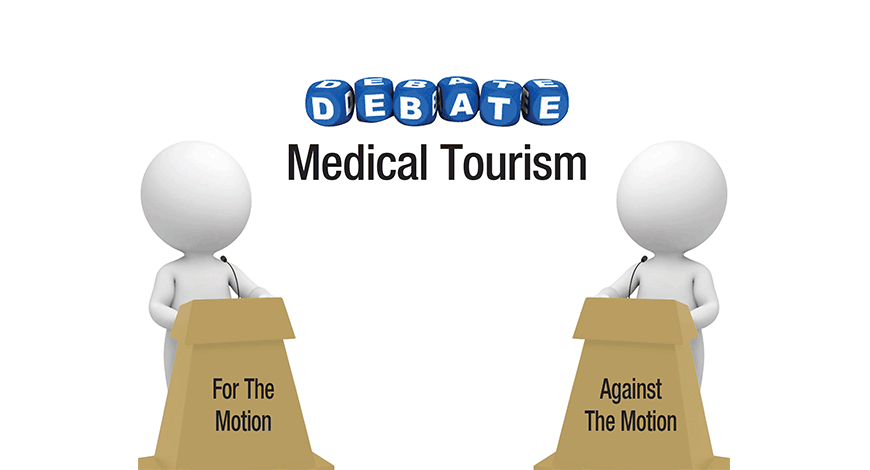Healthcare Buzz
India’s medical tourism industry is poised to grow by 200 percent by 2020, hitting USD 9 billion, Ministry of Tourism

Ministry of Tourism
A possibility or wishful thinking?
India offers a complete bouquet of healthcare services, at an affordable price. India is one of the largest English-speaking nations. Further, easy availability of language interpreters and English-based documents all work as an advantage for the country, especially with inward medical tourists. With the availability of the latest technologies and the growing observance on international quality standards, treatment at a reduced cost, and well certified, highly skilled, and experienced medical professionals are the assets that have made India one of the most desirable medical tourism destinations across the world. India is now one of the top key players in the global medical tourism industry as it strives to provide healthcare services with cutting-edge technology and is facing a phenomenal growth percentage of 16 percent CAGR every year. India has diligently recognized the opportunity and is showcasing its strength and potential in the global market through a public-private partnership, thereby paving its way to becoming a hub for medical tourism.
India seems to be at the crux of a new revolution, as apt and all-encompassing framework medical tourism is garnishing credibility back to home soil. There is a slew of positive factors that have taken the country to the level we are today in the eyes of foreign nationals when it comes to seeking medical care in Indian facilities. These factors increase the willingness of an international patient to obtain medical care in a country away from his home country. The enabling factors for this include cheaper airfare, favorable foreign exchange rates, availability of the latest technologies in healthcare facilities, and plenty of technical manpower among others. All these have helped India gradually become a premier healthcare destination.
The private hospitals in India are well equipped with modern technologies, an early adopter of robotics and are now moving toward digital healthcare. With 33 JCI accredited hospitals and invariably no waiting time for medical care, India holds capabilities of delivering immediate medical care to medical tourists. There are also umpteen numbers of specialized care hospitals, which have an NABH accreditation in Tier-I cities. Besides world-class hospitals, India has a vast pool of skilled and trained doctors and medical personnel recognized internationally. The country also has the highest percentage of doctors and nurses who speak English, making the experience of the patient more palatable. Most of the super specialty hospitals have appointed other language experts and translators to ensure that there is no hiccup when it comes to communication.
Healthcare in India saves patients between 65 to 90 percent of money compared to the cost of similar service in the US, making India one of the most visited countries for healthcare. Moreover, patients visit India not only for the quality and affordability of healthcare service but also for the beautiful scenery and architecture in India’s landscape. In India, medical travel brings a mix of pleasure, luxury, and quality healthcare for medical travelers. In contrast, Pakistan is fast losing its decades’ old Afghan medical tourism to North India. The Afghan medical tourist influx has been diverted to North India since 2016. New Delhi, Gurgaon, and Noida have emerged as three preferred cities for thousands of Afghans for treatment purposes. A number of them have also started coming to Punjab. A major factor against Pakistan was the escalating medical treatment cost and difficulties faced by Afghan nationals in getting appointments from doctors and even accommodation in Pakistan.
India is losing its sheen as a destination for medical tourism owing to several factors including lack of proper insurance policies and uniform pricing policies across hospitals; customers perception as an unhygienic country; lack of international accreditation; and low coordination between various players in the industry like airline operators, hotels, and hospitals. Moreover, under-investment in health infrastructure is prompting patients to turn to countries such as China, Thailand, Malaysia, and Singapore. India’s medical tourism market may also suffer a setback due to the emergence of Carbapenem-resistant enterobacteria infections in medical tourists from the USA. Such infections do not arise in accredited, tertiary-care hospitals since they maintain hygiene and sterilization standards; they have protocols in place to prevent nosocomial infections. Medical tourists however first go to low-cost hospitals and only shift to more high-end healthcare facilities if they face problems. Thus a slowdown has been observed, instead of the boom predicted mainly attributing to unavailability of standardized infection control protocols across the country.
India is also a home to the world’s 14 most polluted cities, according to the WHO, with the national capital ranked as the world’s sixth most polluted city. This not only hurts India’s image but most importantly it hurts medical tourism.
A considerable number of medical tourists from countries such as Kenya, Nigeria, Afghanistan, and Uzbekistan availed facilities in India but the traffic has declined, according to the latest data available with the tourism ministry. The increase in GST on hotels in India, from 18 percent to 28 percent is a major deterrent. In other countries, this percentage is far less. Now, this perception has set in that India has become costlier for medical treatment. The healthcare sector in India currently competes with a number of healthcare providers in Asia who enjoy preferential tax regimes and various concessions announced by their respective governments. Poor services in power and water supplies, road and rail connectivity, lack of hygiene awareness, and bureaucratic support and absence of tourist-friendly approach are some of the critical operational issues facing the industry. Overall, the biggest challenge is the lack of government vision and clear-cut futuristic policies with regard to the medical tourism industry. There is, therefore, an utter need for improvement in ensuring world-class services to medical tourists in India. It needs to travel a long mile to harness the opportunities available and equip itself to address the strategic challenges.












